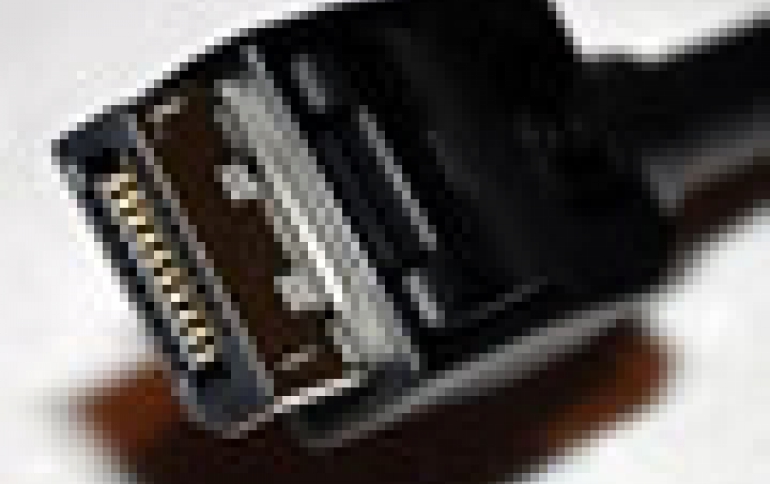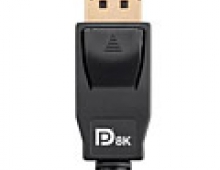
PC Companies Move to All Digital Display Technology, Phasing out Analog
AMD, Dell, Intel Corporation, Lenovo, Samsung LCD Business and LG Display today announced intentions to accelerate adoption of scalable and lower power digital interfaces such as DisplayPort and High-Definition Multimedia Interface (HDMI) into the PC.
Intel and AMD expect that analog display outputs such as Video Graphics Array (VGA) and the low voltage differential signaling technology (LVDS) panel interface would no longer be supported in their product lines by 2015. HDMI has increasingly been included in new PCs for easy connection to consumer electronics devices. DisplayPort is expected to become the single PC digital display output for embedded flat panels, PC monitors and projectors.
DisplayPort and HDMI allow for slimmer laptop designs, and support higher resolutions with deeper color than VGA ? a technology which is more than 20 years old. Additionally, as laptops get smaller and their embedded flat panel resolutions increase for more immersive experiences, the power advantages, bi-directional communications and design efficiency benefits of DisplayPort make it a superior choice over LVDS, the previous standard for LCD panel inputs.
Intel plans to end support of LVDS in 2013 and VGA in 2015 in its PC client processors and chipsets.
"Modern digital display interfaces like DisplayPort and HDMI enhance the consumer visual PC experience by immersing them with higher resolutions and deeper colors -- all at lower power -- to enhance battery life for laptops," said Eric Mentzer, Intel?s vice president of Strategy, Planning and Operations for the Visual and Parallel Computing Group. "By moving to these new interfaces, Intel is able to focus investment on new innovations to enhance the PC experience rather than having to solve challenges of supporting legacy analog interfaces on our latest silicon process technology and products."
AMD plans to begin phasing out legacy interfaces, starting with the removal of native LVDS output from most products in 2013. The company also plans to remove native VGA output starting in 2013, with expansion to all AMD products by 2015. This would mean DVI-I support will be eliminated in the same timeframe.
"Displays and display standards are rapidly evolving, with new features such as multi-display support, stereoscopic 3-D, higher resolutions and increased color depth quickly moving from early adopter and niche usage to mainstream application," said Eric Demers, AMD?s chief technology officer, Graphics Division. "Legacy interfaces such as VGA, DVI and LVDS have not kept pace, and newer standards such as DisplayPort and HDMI clearly provide the best connectivity options moving forward. In our opinion, DisplayPort 1.2 is the future interface for PC monitors, along with HDMI 1.4a for TV connectivity."
While the large installed base of existing VGA monitors and projectors will likely keep VGA on PC back panels beyond 2015, PC makers are in strong support of this transition. The DisplayPort connector interface provides backwards and forwards compatibility by supporting VGA and DVI output via certified adapters, while also providing new capabilities such as single connector multi-monitor support.
Leading display panel manufacturers such as Samsung Electronics LCD Business and LG Display also are in strong support of this transition.
"Samsung Electronics LCD Business is already supporting this transition with embedded DisplayPort notebook panels, which we have been shipping since March of this year," said Seung-Hwan Moon, vice president of engineering, LCD Business, Samsung Electronics.
"LG Display is fully prepared for this future transition. We already have different sizes of LCD panels with eDP out in the market to fulfill various needs of customers." said Michael Kim, vice president of IT Product Planning Department at LG Display.
DisplayPort and HDMI allow for slimmer laptop designs, and support higher resolutions with deeper color than VGA ? a technology which is more than 20 years old. Additionally, as laptops get smaller and their embedded flat panel resolutions increase for more immersive experiences, the power advantages, bi-directional communications and design efficiency benefits of DisplayPort make it a superior choice over LVDS, the previous standard for LCD panel inputs.
Intel plans to end support of LVDS in 2013 and VGA in 2015 in its PC client processors and chipsets.
"Modern digital display interfaces like DisplayPort and HDMI enhance the consumer visual PC experience by immersing them with higher resolutions and deeper colors -- all at lower power -- to enhance battery life for laptops," said Eric Mentzer, Intel?s vice president of Strategy, Planning and Operations for the Visual and Parallel Computing Group. "By moving to these new interfaces, Intel is able to focus investment on new innovations to enhance the PC experience rather than having to solve challenges of supporting legacy analog interfaces on our latest silicon process technology and products."
AMD plans to begin phasing out legacy interfaces, starting with the removal of native LVDS output from most products in 2013. The company also plans to remove native VGA output starting in 2013, with expansion to all AMD products by 2015. This would mean DVI-I support will be eliminated in the same timeframe.
"Displays and display standards are rapidly evolving, with new features such as multi-display support, stereoscopic 3-D, higher resolutions and increased color depth quickly moving from early adopter and niche usage to mainstream application," said Eric Demers, AMD?s chief technology officer, Graphics Division. "Legacy interfaces such as VGA, DVI and LVDS have not kept pace, and newer standards such as DisplayPort and HDMI clearly provide the best connectivity options moving forward. In our opinion, DisplayPort 1.2 is the future interface for PC monitors, along with HDMI 1.4a for TV connectivity."
While the large installed base of existing VGA monitors and projectors will likely keep VGA on PC back panels beyond 2015, PC makers are in strong support of this transition. The DisplayPort connector interface provides backwards and forwards compatibility by supporting VGA and DVI output via certified adapters, while also providing new capabilities such as single connector multi-monitor support.
Leading display panel manufacturers such as Samsung Electronics LCD Business and LG Display also are in strong support of this transition.
"Samsung Electronics LCD Business is already supporting this transition with embedded DisplayPort notebook panels, which we have been shipping since March of this year," said Seung-Hwan Moon, vice president of engineering, LCD Business, Samsung Electronics.
"LG Display is fully prepared for this future transition. We already have different sizes of LCD panels with eDP out in the market to fulfill various needs of customers." said Michael Kim, vice president of IT Product Planning Department at LG Display.





















